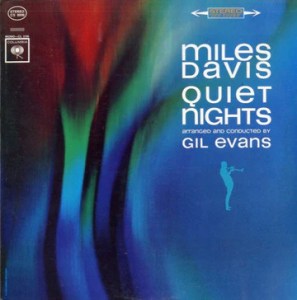- This oh-so-spacious Miles Davis / Gil Evans classic finally returns to the site with INCREDIBLE Shootout Winning Triple Plus (A+++) sound or close to it on both sides of this original 360 Stereo pressing
- Rich, warm, smooth and clear throughout, this 30th Street Studios recording is another engineering triumph from the legendary Fred Plaut
- Produced by Teo Macero, the album is the fourth and final collaboration between Davis and Evans
- In the Saturday Review, Quiet Nights received praise for Davis’ “wonderfully songful trumpet in a Latin-American vein,” set against “piercingly lustrous curtains of tone and discreet Caribbean rhythms.”“
Top Studios and Concert Halls – Columbia 30th Street Studios
Michel Legrand – Legrand Jazz
More of the Music of Michel Legrand
Hot Stamper Pressings of Large Group Jazz Recordings Available Now
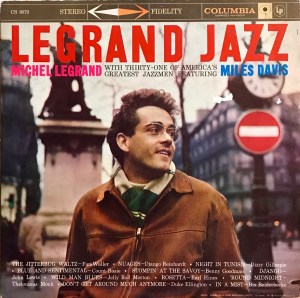
- Legrand Jazz returns to the site for the first time in close to ten years, with STUNNING Shootout Winning Triple Plus (A+++) throughout this vintage 6-Eye Stereo pressing – fairly quiet vinyl too
- Both of these sides are open and spacious with real depth to the soundfield and lots of separation between the various instruments, a very important quality for a recording of a large ensemble recording such as this
- Rich, solid bass; you-are-there immediacy; energy and drive; instruments that are positively jumping out of the speakers – add it all up and you can see that this copy had the sound we were looking for
- Legrand rounded up 31 of the greatest jazz players of the 50s, divided them up into three groups, and the result was a landmark recording with audiophile sound to die for
- We’re talking jazz giants: John Coltrane, Miles Davis, Bill Evans, Ben Webster, Herbie Mann, Art Farmer, Donald Byrd, Phil Woods — everybody who was anybody is on this record
- 4 1/2 stars: “Throughout this superlative album, the arrangements are colorful and unusual, making one wish that Legrand had recorded more jazz albums through the years.”
- Robert Brook recently played the “award winning” Impex 45 RPM pressing from 2019 (as did we) and wants to know what you made of the sound
This album is more common in mono than stereo, but we found the sound of the mono pressing we played seriously wanting. It’s dramatically smaller and more squawky and crude than even the worst of the stereo pressings we played.
We had a copy we liked years ago, but that was years ago. We don’t have that copy anymore and we don’t have a stereo that sounds the way our old one did either.
The unique voices of each of the jazz giants featured on this landmark recording contributes memorable solos then receeds into the group to provide the structure for the rest of the music. Which is an awkward way of saying everybody does his thing in service to the song and then gets out of the way. “The Jitterbug Waltz,” which opens up side one, is a perfect example: the arrangement is completely original, and within its structure, Miles Davis, Phil Woods, John Coltrane and others solo beautifully, each taking a turn at the melody. If three minutes into this song you don’t like what you’re hearing, jazz is just not for you.
Crack The Sky – We Get It, This Band Is Not For Everyone
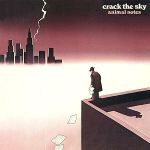 More of Our Best Art Rock Records
More of Our Best Art Rock Records
Other Well Recorded Albums that Should Be More Popular with Audiophiles
To my mind, speaking as both a fan and an audiophile, both the first two Crack the Sky albums succeed brilliantly on every level: production, originality, songwriting, technical virtuosity, musical consistency and, perhaps most importantly for those of you who have managed to make it this far, top quality audiophile sound.
This is simply a great album of adventurous, highly melodic Proggy Arty rock. If you like the well known bands that made the classic albums cited below there’s a very good chance you will like this much less well known band’s second album also. Especially if you have the taste for something different — I know of no other album quite like it. It may have been strongly influenced by many of the 70s Classics of both Prog and Art Rock, but it is stylistically unique.
This is high-production-value rock that pulls out all the stops and then some, with a massive Beatlesque string section, horns, synths, backward guitars and studio effects that rival those of 10cc.
Much like Ambrosia’s debut (another poorly understood band on a small label), such an ambitious project was clearly an effort to make a grand musical statement along the lines of Tumbleweed Connection, Sgt. Pepper, Crime of the Century, Close to the Edge, The Original Soundtrack or Dark Side of the Moon — all albums I suspect this band played countless times in hopes of recreating some of that magic themselves in the studio. I am of the opinion that they succeeded marvelously.
In the 70s I was a huge fan of those albums too. (Still am of course; check out our Top 100 if you don’t believe me. They’re all in there.) I played them more times than I can remember, with Crack The Sky’s albums spending plenty of time — in heavy rotation you could say — on the turntable in those early days.
Fun tip: Listen for the Elton-John-like piano chords on the first track. Can you name that song? (Hint: it’s on Tumbleweed Connection.)
Miles Davis – Sketches of Spain on 6-Eye in Stereo
More Miles Davis
More Vintage Columbia Pressings with Hot Stampers

- With two killer Nearly Triple Plus (A++ to A+++) sides, this 6-Eye Stereo pressing is close to the BEST we have ever heard, right up there with our Shootout Winner
- Reasonably quiet vinyl for an early label pressing, few are this clean, and none come any quieter if our experience with dozens of them over the years counts for anything
- The better copies capture the realistic sound of Davis’s horn, the body, the breath and the bite (and the correct amount of squawk as well)
- Balanced, clear and undistorted, this 30th Street recording shows just how good Columbia’s engineers (lead by the inestimable Fred Plaut) were back then
- 5 stars: “Sketches of Spain is the most luxuriant and stridently romantic recording Davis ever made. To listen to it in the 21st century is still a spine-tingling experience…”
- This pressing is clearly a demo disc for orchestral size and space
On the best pressings of this masterpiece, the sound is truly magical. (AMG has that dead right in their review.) It is lively but never strained. Davis’s horn has breath and bite, just like the real thing. What more can you ask for?
On the better pressings of this masterpiece, the sound is truly magical. (AMG has that dead right in their review.) It is lively but never strained. Davis’s horn has breath and bite, just like the real thing. What more can you ask for?
We Was Wrong in the Past About HP and Six Eye Labels
In previous commentary we had written:
Harry Pearson added this record to his TAS list of super discs many years ago, not exactly a tough call it seems to us. Who can’t hear that this is an amazing sounding recording?
Of course, you can be quite sure that he would have been listening exclusively to the earliest pressings on the Six Eye label. Which simply means that he probably never heard a copy with the clarity, transparency, and freedom from distortion that these later label pressings offer.
The Six Eyes are full of Tubey Magic, don’t get me wrong; Davis’s trumpet can be and usually is wonderful sounding.
It’s everything else that tends to suffer, especially the strings, which are shrill and smeary on most copies, Six Eyes, 360s and Red Labels included.
Over the course of the last few years, we’ve come to appreciate just how good the right Six Eye stereo pressing can sound.
In other words, we was wrong.
A Big Group of Musicians Needs This Kind of Space
One of the qualities that we don’t talk about on the site nearly enough is the SIZE of the record’s presentation. Some copies of the album just sound small — they don’t extend all the way to the outside edges of the speakers, and they don’t seem to take up all the space from the floor to the ceiling. In addition, the sound can often be recessed, with a lack of presence and immediacy in the center.
Other copies — my notes for these copies often read “BIG and BOLD” — create a huge soundfield, with the music positively jumping out of the speakers. They’re not brighter, they’re not more aggressive, they’re not hyped-up in any way, they’re just bigger and clearer.
And most of the time those very special pressings are just plain more involving. When you hear a copy that does all that — a copy like this one — it’s an entirely different listening experience.
Dave Brubeck Quartet / Time Further Out – What to Listen For
More of the Music of Dave Brubeck
Reviews and Commentaries for Time Further Out
The best copies such as this one demonstrate the big-as-life Fred Plaut Columbia sound at its best (even better than Time Out in our opinion).
These vintage recordings are full-bodied, spacious, three-dimensional, rich, sweet and warm in the best tradition of an All Tube Analog recording.
If you want to hear big drums in a big room, these Brubeck recordings will show you that sound better than practically any records we know of.
The one standout track on this album for audiophiles is surely Unsquare Dance, with its uncannily real sounding handclaps in 7/4. The copies that did the best job of reproducing that “flesh on flesh” sound of actual human hands clapping scored very well in our shootout.
More to Listen For
For starters, listen for a fat snare and rich piano on the first track of side one. When you hear that, assuming you do, you should know you are in for a treat. Our best copies captured those two sounds brilliantly.
- More records that are good for testing the sound of the snare drum
- More records that are good for testing the sound of the piano
On the second track the clarity of the brushed snare is key to how resolving and transparent any copy is. The rich, smooth sound of Desmond’s sax balanced against the clarity of the brushes will help you make sure that the overall sound is tonally correct from top to bottom.
- More records that are good for testing transparency
- More records that are good for testing midrange tonality
On side two the first track has the Wall to Wall Big Drums in a Big Room sound that positively blows our minds. If you’re a fan of with jump out of the speakers sound, this is the album for you.
Note that in some places it sounds like the piano is overdriving its mic. We heard that sound on practically every copy we played, so we’re pretty sure it’s on the tape that way.
More Test Discs
We are in the process of making some lists (more lists!) for records we’ve found to be good for testing, tweaking and tuning your system, your room and your front end setup, among other things. You may want to check them out.
- Favorite jazz test discs
- Favorite orchestral test discs
- Favorite rock and pop test discs
- Still more of our favorite test discs
These are the records that challenged me and helped me to achieve more progress in audio. If you want to improve your stereo, these are some of the best records we know of to help get you to the next level.
Recording Time Further Out
(Bolding added by me.)
Mark Wilder was interviewed about the recording of these Fred Plaut sessions..
Fred Plaut and Frank Laico were two of Brubeck’s recording engineers. Plaut is a true balance engineer; he’s my idol. I don’t know how he could pull off what he did in three hours.
He continued:
It’s amazing how well-recorded the group was back then. The sound is so three-dimensional, bigger than life.
Yet it’s amazing how little the engineers did to get that sound. They just put one mic a few feet from each instrument, and mixed live to 3-track—for left, center, and right. Then they edited the tape and mixed down to 2-track.
The old stuff sounds better than what we’re doing now. We’ve been going in the wrong direction sound-wise for many years. The layout of the stereo stage was more realistic then, too. Drums were on the left, piano on the right, sax and bass in the middle.
Dave Brubeck Quartet – Time Further Out in Stereo
More Dave Brubeck
Reviews and Commentaries for Time Further Out
- This vintage Columbia 6-Eye Stereo pressing has some of the best sound we have heard for the album, with both sides earning STUNNING Nearly Triple Plus (A++ to A+++) grades – just shy of our Shootout Winner
- It’s bigger, richer, more Tubey Magical, and has more extension on both ends of the spectrum than practically all the other copies we played
- It’s also graded just one half plus lower on each side than our Shootout Winner, and it has no audible marks, so you might just find that this is the best way to go for Time Further Out
- This copy demonstrates the big-as-life Fred Plaut Columbia Sound at its best – better even than Time Out(!)
- 4 1/2 stars: “The selections, which range in time signatures from 5/4 to 9/8, are handled with apparent ease (or at least not too much difficulty) by pianist Brubeck, altoist Paul Desmond, bassist Eugene Wright, and drummer Joe Morello on this near-classic.”
Time Further Out is consistently more varied and, dare we say, more musically interesting than Time Out.
If you want to hear big drums in a big room these Brubeck recordings will show you that sound better than practically any record we know of. These vintage recordings are full-bodied, spacious, three-dimensional, rich, sweet and warm in the best tradition of an All Tube Analog recording. (more…)
Robert Brook’s Guide to Legrand Jazz on Impex
 Robert Brook has a blog which he calls
Robert Brook has a blog which he calls
A GUIDE FOR THE DEDICATED ANALOG AUDIOPHILE
Robert tries to remain positive when choosing the words that would best describe the award winning Impex release of Legrand Jazz. In the end he goes with the spoken word over the written one.
Years ago I wrote about how important the Legrand Jazz album was for me in my growth as a critical listener. It’s yet another example of an album that helped make me a better audiophile by showing me the error of my tweaking and tuning ways.
Let’s watch the video and see what Robert has learned about Impex’s recent release.
Legrand Jazz (featuring Miles Davis) – the 2019 IMPEX Double 45 rpm
Michael Fremer gives the Impex pressings an 11 for sound. He writes (bolding added by me):
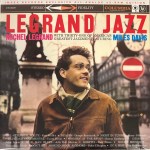
“This IMPEX reissue is sourced from an “analog mix-down transfer of the original 1958 work tape by Mark Wilder at Battery Studios” and cut by Chris Bellman and Bob Donnelly at Bernie Grundman Mastering on Grundman’s all-tube mastering system. I have a clean, original 6-Eye pressing that this superbly pressed reissue betters in every way. This will make both your stereo and your heart sing. Some of the greatest jazz musicians of that or any era wailing and clearly having a Legrand time. Limited to 3000 copies. Don’t miss it!”
Who are you going to believe, the Self-Appointed Vinyl Experts of the World and Bestowers of Prestigious Audio Awards (which you may have never heard of; I sure hadn’t), or some guy who’s just dedicated to being an Analog Audiophile and knows a good record when he hears one? (Or doesn’t hear one, as the case may be.)
Like Robert, I tried being kinder and gentler, but it didn’t take. I may resolve to try harder in 2024. Then again, I may not. If we’re nicer to the people currently making Heavy Vinyl records, aren’t we running the risk, a la P.J. O’Rourke, of encouraging them?
Various and Sundry
We just finished a shootout for the originals of Legrand Jazz and will be listing them soon.
We’ve also played the Impex pressing and will be discussing its sound at some point.
More on Robert’s system here. You may notice that it has a lot in common with the one we have.
Simon & Garfunkel – Stick to the 360s for the Best Sound
More of the Music of Simon and Garfunkel
Reviews and Commentaries for Parsley, Sage, Rosemary and Thyme
More superb sound from the legendary CBS 30th street studios in New York!
This album checks off some big boxes for us here at Better Records.
- It’s a Top 100 album
- It’s a Demo Disc for Tubey Magic
- It’s a must own album from 1966
- It’s the duo’s best sounding record
- And it has especially Tubey Magical guitars
- It’s part of the core collection of well recorded rock & pop albums
Turn up the volume, turn down the lights, and you’ll have one of the best — if not THE best — folk duos of all time performing right there in your listening room for you. The sound is open, spacious, and transparent with breathy vocals and unusually low levels of spit. The strings are more dynamic than we’re used to hearing and the bottom end has really nice weight to it.
These old Simon & Garfunkel records weren’t often owned by audiophiles who kept their records in pristine condition.
No, these were the popular records of their day, purchased by the record-buying public, and they were played and played hard, typically on cheap equipment. There are many quiet passages on this album that are going to reveal whatever surface issues might exist, so a copy that plays Mint Minus Minus is about as good as you can hope for.
Since only the right vintage 360 pressings have any hope of sounding good on this album, that will most often be the playing condition of the copies we sell.
Audio in the 70s
In my formative years in the hobby, most of the audiophiles I ran into were primarily classical guys. Some played jazz and vocal records, but nobody really put much time and money into their stereo so they could hear radio-friendly pop songs reproduced in higher fidelity.
That was my experience when I first got into audio in the early 70s. It was taken for granted that good equipment existed to play orchestral music, jazz, vocals and not much else.
We Can Help
Below you will find some moderately helpful advice concerning the pressings that tend to win shootouts.
Stick to stereo. The mono pressings we’ve played over the last ten years ranged from passable to awful. We stopped buying them a long time ago. We know of no Simon and Garfunkel albums that sound better in mono than they do in stereo.
As of 2023, Parsley, Sage, Rosemary and Thyme sounds best to us this way:
Pink Floyd – The Wall
More Pink Floyd
Letters and Commentaries for The Wall
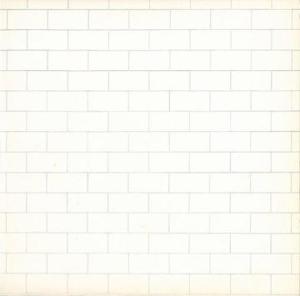
- You’ll find superb Double Plus (A++) sound or close to it on all FOUR sides of these vintage pressings
- Forget whatever dead-as-a-doornail Heavy Vinyl record they’re making these days – if you want to hear the Tubey Magic, size and energy of Floyd’s Magnum Opus from 1979, this is the way to go
- The Wall demands big, bold, explosively dynamic ANALOG sound, and here is a copy that delivers on that promise (particularly on sides one, three and four)
- Sides one, three and four boast grungy electric guitars, breathy vocals, huge punchy drums, earth-shaking bass and room-filling ambience like you’ve never heard before, and side two is not far behind in all those areas
- One of the best sounding rock recordings of all time – here is a copy that will make our case
- If you’re a Pink Floyd fan, or maybe just somebody looking for a killer Demo Disc to play, this title from 1979 surely deserves a place in your collection
We spend a ridiculous amount of time cleaning, playing, and comparing copies of this classic double album for our shootouts and let me tell you, there are a lot of weak copies out there.
What do these kinds of top grades give you for The Wall? Top-notch clarity and transparency, mind-blowing immediacy, weight to the bottom, extension up top, HUGE open soundfields, real texture to all the instruments, TONS of energy with serious dynamics, BIG punchy drums and loads of natural ambience.
Pink Floyd tends to be an amazingly well-recorded band, and this album is certainly no exception. If you’ve taken home one of our Hot Stampers for Dark Side of the Moon, Meddle, or Wish You Were Here, then you certainly know what we’re talking about. (more…)
Miles Davis – Someday My Prince Will Come
More Miles Davis
More Vintage Columbia Hot Stamper Pressings
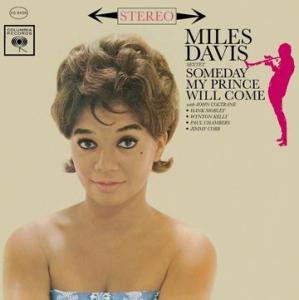
- An outstanding copy of this Miles Davis classic, with a KILLER Shootout Winning Triple Plus (A+++) side one mated to a solid Double Plus (A++) side two
- This original Columbia 6-Eye stereo LP is full-bodied, high-rez and spacious, with Miles’ horn uncannily present, a sound you just cannot find on Heavy Vinyl no matter who makes it
- If you have the big system and dedicated room a record of this quality demands, you can put Miles right in the room with you with a Hot Stamper pressing as good as this
- Vintage pressings that play this reasonably quiet and are free of scratches (minor noted issue below notwithstanding) and groove damage are few and far between, but here’s one, perfect for even the most demanding audiophile
- Another engineering triumph for Fred Plaut at Columbia’s legendary 30th Street Studios – the man is a genius
- Musically this is one of our very favorite Miles albums, and the sound is Demo Disc Quality on the better copies
- If you’re a jazz fan, this Must Own Title from 1961 belongs in your collection
